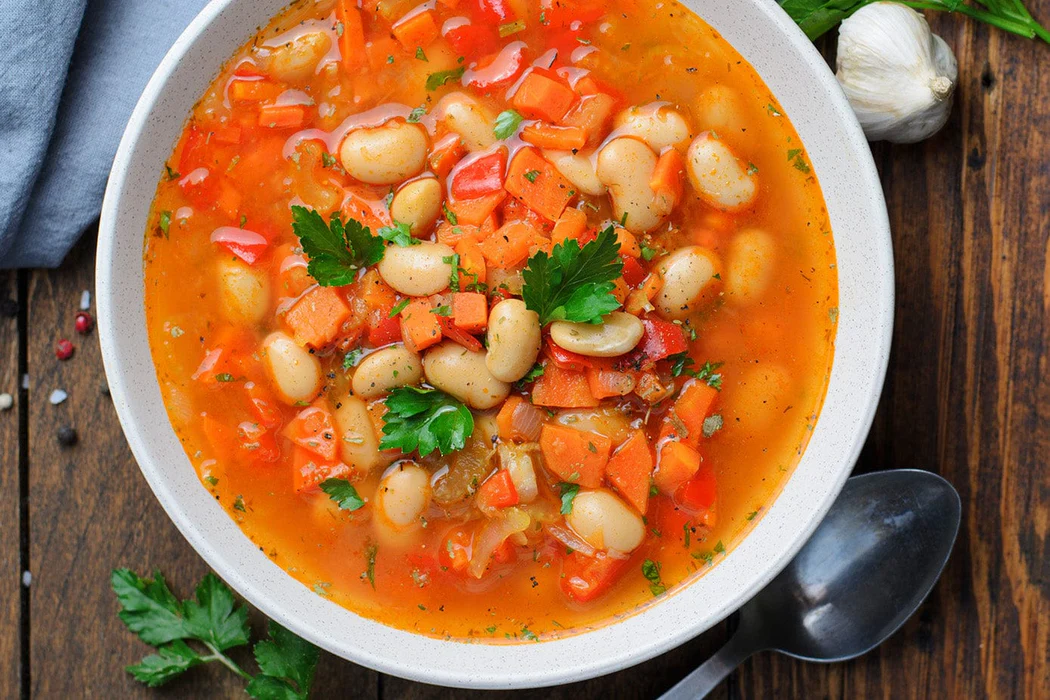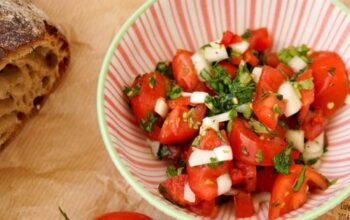Vegetable broth is one of the most versatile staples any home cook can have in their kitchen. Unlike meat-based stocks, it is light, quick to prepare, and can be enjoyed by vegetarians and vegans alike. A well-made vegetable broth provides a delicate yet flavorful base for soups, sauces, grains, and stews. It is also a wonderful way to use up extra produce and kitchen scraps, ensuring nothing goes to waste.
Unlike broths made with bones, vegetable broth requires far less cooking time. Vegetables release their flavor quickly, and simmering them gently for about an hour is all it takes to extract a full-bodied, aromatic broth. The result is a golden liquid that can be sipped on its own or used to elevate countless dishes.
Ingredients
- 2 medium onions, quartered (skins left on for color)
- 3 medium carrots, roughly chopped
- 3 celery stalks, roughly chopped
- 1 small fennel bulb, roughly chopped (optional, adds sweetness)
- 1 leek, cleaned and sliced (white and light green parts only)
- 1 garlic bulb, halved horizontally
- 1 small bunch of parsley stems
- 3–4 sprigs fresh thyme (or 1 teaspoon dried thyme)
- 2 bay leaves
- 8–10 whole black peppercorns
- 1 teaspoon salt (optional; you can season later depending on use)
- 12 cups cold water
- Optional extras: a few mushrooms (for umami), a piece of kombu (dried seaweed), or a small tomato for depth of flavor
Instructions
- Prepare the vegetables
Wash and roughly chop all the vegetables. Keeping the onion skins on gives the broth a warm golden color, while fennel or leeks add sweetness and depth. There’s no need for perfect cutting, as the vegetables will be strained out later. - Combine in a stockpot
Place the onions, carrots, celery, fennel, leek, garlic, parsley stems, thyme, bay leaves, peppercorns, and any optional extras into a large stockpot. Pour in 12 cups of cold water. - Bring to a simmer
Slowly bring the pot to a gentle simmer over medium heat. Avoid boiling, which can cause the broth to turn cloudy and overly bitter. - Simmer gently
Reduce the heat to low and let the broth simmer uncovered for 45 minutes to 1 hour. Stir occasionally. During this time, the vegetables release their flavors and create a fragrant, golden broth. - Strain the broth
Once simmering is complete, place a fine-mesh sieve or cheesecloth-lined colander over another pot or large bowl. Carefully pour the broth through to remove the vegetables and aromatics. Discard the solids, as they will have given up most of their flavor. - Cool and store
Allow the strained broth to cool to room temperature. Store it in airtight containers in the refrigerator for up to 5 days, or freeze in smaller portions for up to 3 months.
Tips for the Best Vegetable Broth
- Variety is key: Use a balance of sweet vegetables (carrots, fennel), savory ones (onions, leeks), and herbal notes (parsley, thyme). Avoid strong-tasting vegetables like broccoli, cauliflower, or Brussels sprouts, as they can overwhelm the broth.
- Don’t overcook: Unlike meat-based stocks, vegetable broth becomes bitter if cooked too long. Keep simmering time under 90 minutes.
- Roast for depth: For a richer, darker broth, roast the vegetables in the oven at 400°F (200°C) until caramelized before simmering.
- Zero-waste broth: Save vegetable trimmings like carrot peels, onion skins, and celery tops in a freezer bag. Once you have enough, use them to make broth.



